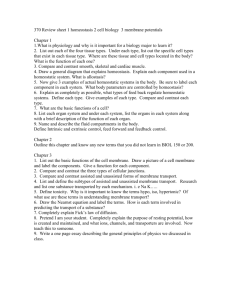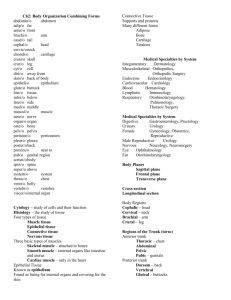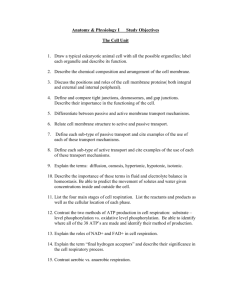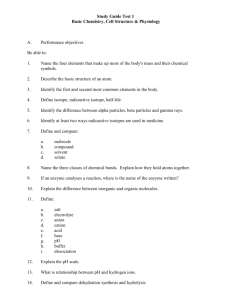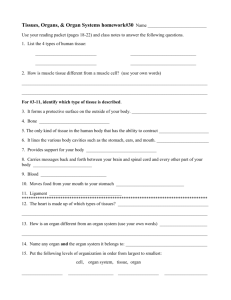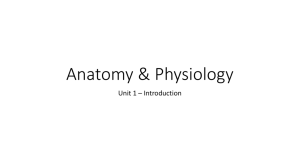Biology 9 Study Guide Body Organization and Homeostasis
advertisement
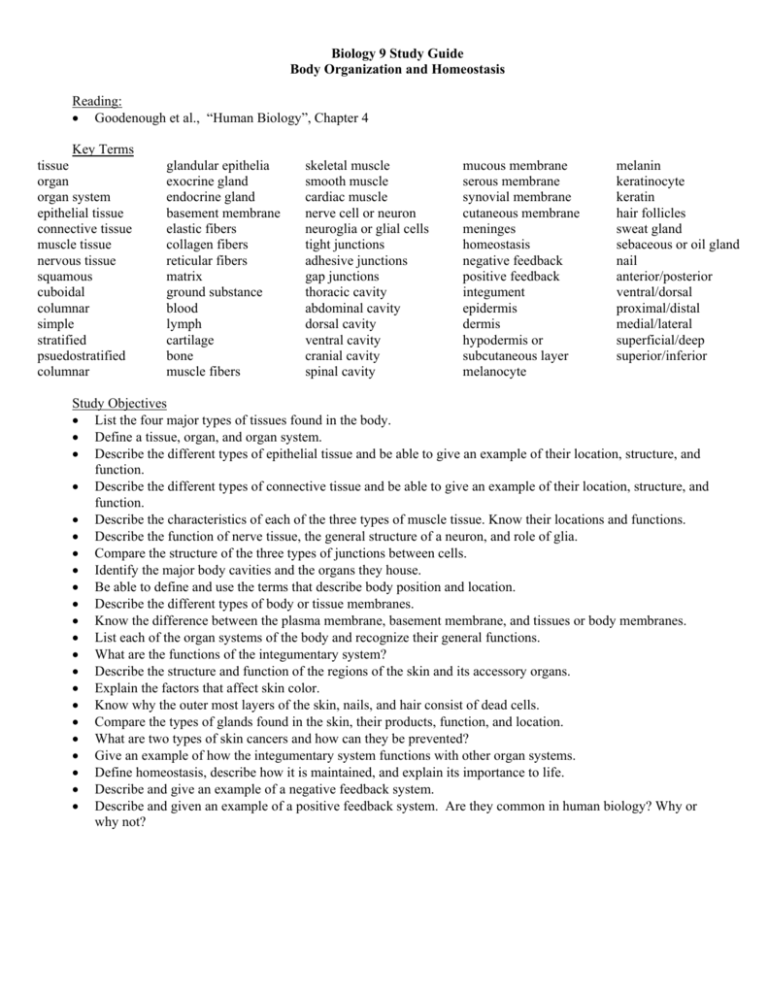
Biology 9 Study Guide Body Organization and Homeostasis Reading: • Goodenough et al., “Human Biology”, Chapter 4 Key Terms tissue organ organ system epithelial tissue connective tissue muscle tissue nervous tissue squamous cuboidal columnar simple stratified psuedostratified columnar glandular epithelia exocrine gland endocrine gland basement membrane elastic fibers collagen fibers reticular fibers matrix ground substance blood lymph cartilage bone muscle fibers skeletal muscle smooth muscle cardiac muscle nerve cell or neuron neuroglia or glial cells tight junctions adhesive junctions gap junctions thoracic cavity abdominal cavity dorsal cavity ventral cavity cranial cavity spinal cavity mucous membrane serous membrane synovial membrane cutaneous membrane meninges homeostasis negative feedback positive feedback integument epidermis dermis hypodermis or subcutaneous layer melanocyte melanin keratinocyte keratin hair follicles sweat gland sebaceous or oil gland nail anterior/posterior ventral/dorsal proximal/distal medial/lateral superficial/deep superior/inferior Study Objectives • List the four major types of tissues found in the body. • Define a tissue, organ, and organ system. • Describe the different types of epithelial tissue and be able to give an example of their location, structure, and function. • Describe the different types of connective tissue and be able to give an example of their location, structure, and function. • Describe the characteristics of each of the three types of muscle tissue. Know their locations and functions. • Describe the function of nerve tissue, the general structure of a neuron, and role of glia. • Compare the structure of the three types of junctions between cells. • Identify the major body cavities and the organs they house. • Be able to define and use the terms that describe body position and location. • Describe the different types of body or tissue membranes. • Know the difference between the plasma membrane, basement membrane, and tissues or body membranes. • List each of the organ systems of the body and recognize their general functions. • What are the functions of the integumentary system? • Describe the structure and function of the regions of the skin and its accessory organs. • Explain the factors that affect skin color. • Know why the outer most layers of the skin, nails, and hair consist of dead cells. • Compare the types of glands found in the skin, their products, function, and location. • What are two types of skin cancers and how can they be prevented? • Give an example of how the integumentary system functions with other organ systems. • Define homeostasis, describe how it is maintained, and explain its importance to life. • Describe and give an example of a negative feedback system. • Describe and given an example of a positive feedback system. Are they common in human biology? Why or why not?

